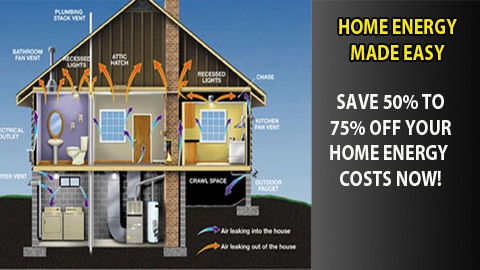
Hey there! As a solar panel cooling expert, I’ve seen firsthand the benefits of keeping solar panels cool.
Solar panels are an excellent source of renewable energy that can power homes and businesses without emitting harmful pollutants into the environment. However, they do have one major drawback – heat.
When solar panels get too hot, their efficiency drops significantly, reducing the amount of electricity they produce. This is why it’s crucial to keep them cool, especially in areas with high temperatures or intense sunlight.
In this article, I’ll be discussing the importance of solar panel cooling and some effective ways to achieve it. Let’s dive in!
The Impact Of Heat On Solar Panel Efficiency
As a solar panel cooling expert, it’s clear that heat has a significant impact on the efficiency of solar panels. When temperatures rise, so does the resistance in the circuitry within these panels, which ultimately causes energy to be lost as heat rather than converted into usable electricity.
This loss can significantly decrease the amount of power generated by each individual module and can have detrimental effects on entire solar systems.
In addition to this internal resistance, high temperatures also cause changes in external factors such as sunlight absorption rates and ambient air temperature. The hotter a panel becomes, the less efficient it is at absorbing light from the sun.
As well, warmer air surrounding panels creates an environment where there is less thermal gradient for heat transfer to occur between modules and their surroundings. It is imperative that we find ways to reduce these impacts if solar technology is going to continue its upward trajectory towards greater sustainability and cost-effectiveness.
Understanding The Science Of Solar Panel Cooling
Understanding the Science of Solar Panel Cooling is essential for anyone who wants to maximize their solar panel efficiency. It is a known fact that when the temperature rises, so does the resistance in solar cells which leads to lower power output. Therefore, it’s important to understand how heat affects solar panels and what can be done to prevent overheating.
- The Sun: The sun emits electromagnetic radiation (light) that falls on your solar panel and gets converted into electricity.
- Reflection: Some sunlight reflects off the surface of solar panels before they get absorbed leading to loss of energy.
- Absorption: The absorption process heats up the cell which increases its temperature and lowers its efficiency.
- Convection: Heat generated by absorption causes air around the cell to rise creating cooler air currents that cool down nearby cells.
As an expert in this field, I highly recommend understanding these basic principles as a foundation for implementing effective cooling methods for your solar panels. In the subsequent section, we will delve deeper into some practical ways through which you can keep your panels cool and efficient throughout their lifespan!
Effective Cooling Methods For Solar Panels

When it comes to cooling solar panels, there are several important considerations:
- Improved heat sinks
- Increased airflow
- Coolant circulation
- Reflective coatings
- Improved ventilation
- Thermal management strategies
- Heat pipe cooling
- Radiation shielding
- Thermal insulation
- Phase change materials
- Heat exchanger systems
- Ambient air cooling
- Solar tracking
- Solar tracker orientation
- Cloud cover monitoring
I’ve found that these methods can be combined to create an effective solar panel cooling system.
Improved Heat Sinks
Hey there! Are you looking for ways to effectively cool your solar panels?
Well, as a solar panel cooling expert, I suggest exploring improved heat sinks. Heat sinks are essential in dissipating the excess heat generated by solar panels during operation.
An effective heat sink should have a high thermal conductivity and surface area to maximize heat dissipation. Improved designs that incorporate advanced materials such as graphite or carbon nanotubes can significantly enhance the performance of traditional aluminum heat sinks.
By adopting these innovative technologies, we can improve solar panel efficiency and prolong their lifespan without sacrificing energy output.
Increased Airflow
Now, let’s talk about another effective cooling method for solar panels – increased airflow.
As a cooling expert in the field of solar panel technology, I highly recommend this approach to improve heat dissipation and enhance overall efficiency.
By increasing the flow of air over the surface of solar panels, we can reduce their operating temperature and prevent thermal degradation.
To achieve this, we can utilize several techniques such as installing fans or ventilators that circulate cool air around the panels.
In addition, strategic placement of solar panels can also optimize natural convection currents to promote better airflow.
With these methods in place, we can ensure that our solar panels operate at optimal temperatures and maximize energy production without compromising longevity.
Best Practices For Maintaining Optimal Temperature For Maximum Efficiency

Maintaining optimal temperature is crucial for the maximum efficiency of solar panels. Solar panel cooling experts recommend several best practices to ensure that your panels operate at peak performance.
Firstly, it’s important to keep your panels clean and free from debris accumulation as this can lead to heat buildup and reduce their output efficiency.
Additionally, installing a ventilation system or choosing a location that allows sufficient airflow will help dissipate any heat generated by the panels.
Another effective way to maintain optimal temperature is through shade control – if possible, install your panels in an area with some natural shading during peak hours of sunlight to prevent overheating.
Lastly, regular inspection and maintenance checks should be carried out on your solar panel system to identify any issues affecting its temperature regulation capabilities.
By following these best practices, you’ll ensure that your solar panels run efficiently for years to come without compromising their lifespan.
To sum up, maintaining ideal temperatures for solar panel operation requires consistent effort and attention to details such as cleanliness, ventilation, shade control, and routine inspections. With proper care and adherence to these recommended best practices, you can enjoy maximum energy production from your solar panel systems while extending their serviceable lives significantly!
Conclusion
As a solar panel cooling expert, I know that temperature is one of the most critical factors affecting solar panel efficiency. High temperatures can cause significant drops in energy output and even permanent damage to the panels themselves.
But fear not, there are effective cooling methods available to ensure maximum performance. Understanding the science of solar panel cooling is key to implementing effective measures.
From passive techniques like shading and ventilation, to active systems such as water or air-based cooling, each option has its benefits and drawbacks depending on location and climate.
With careful consideration and regular maintenance, we can keep our panels cool and producing optimal amounts of clean energy for years to come.

